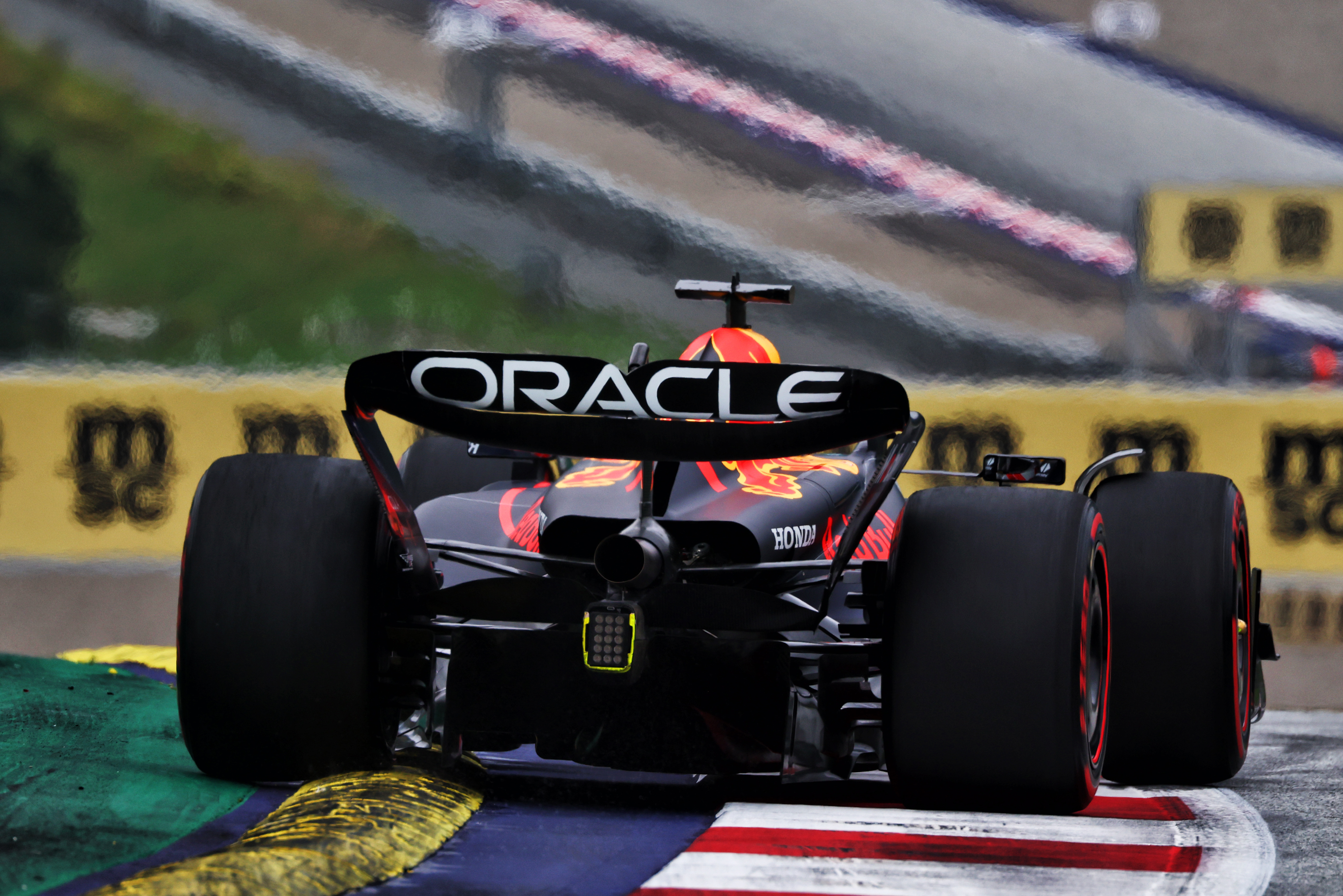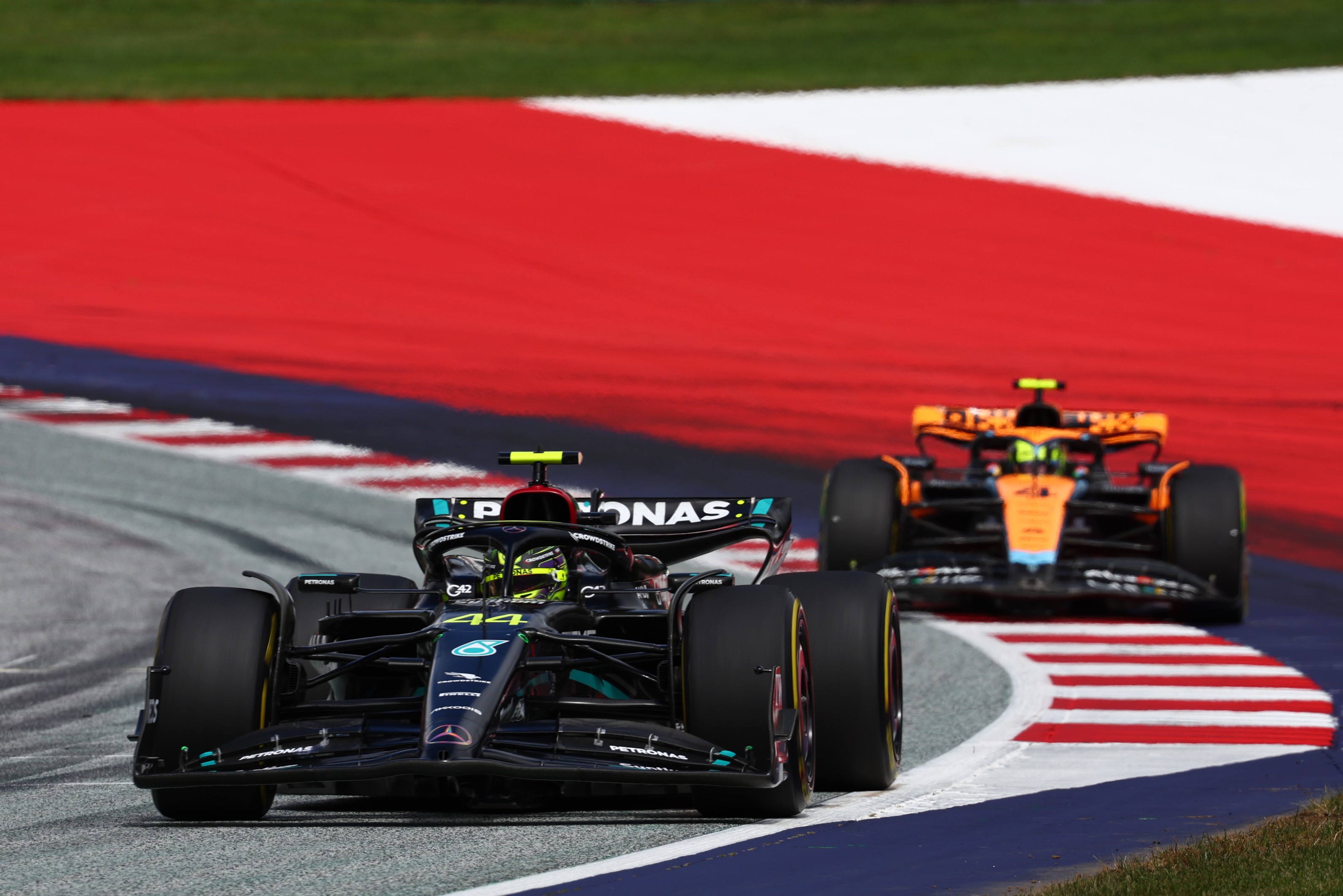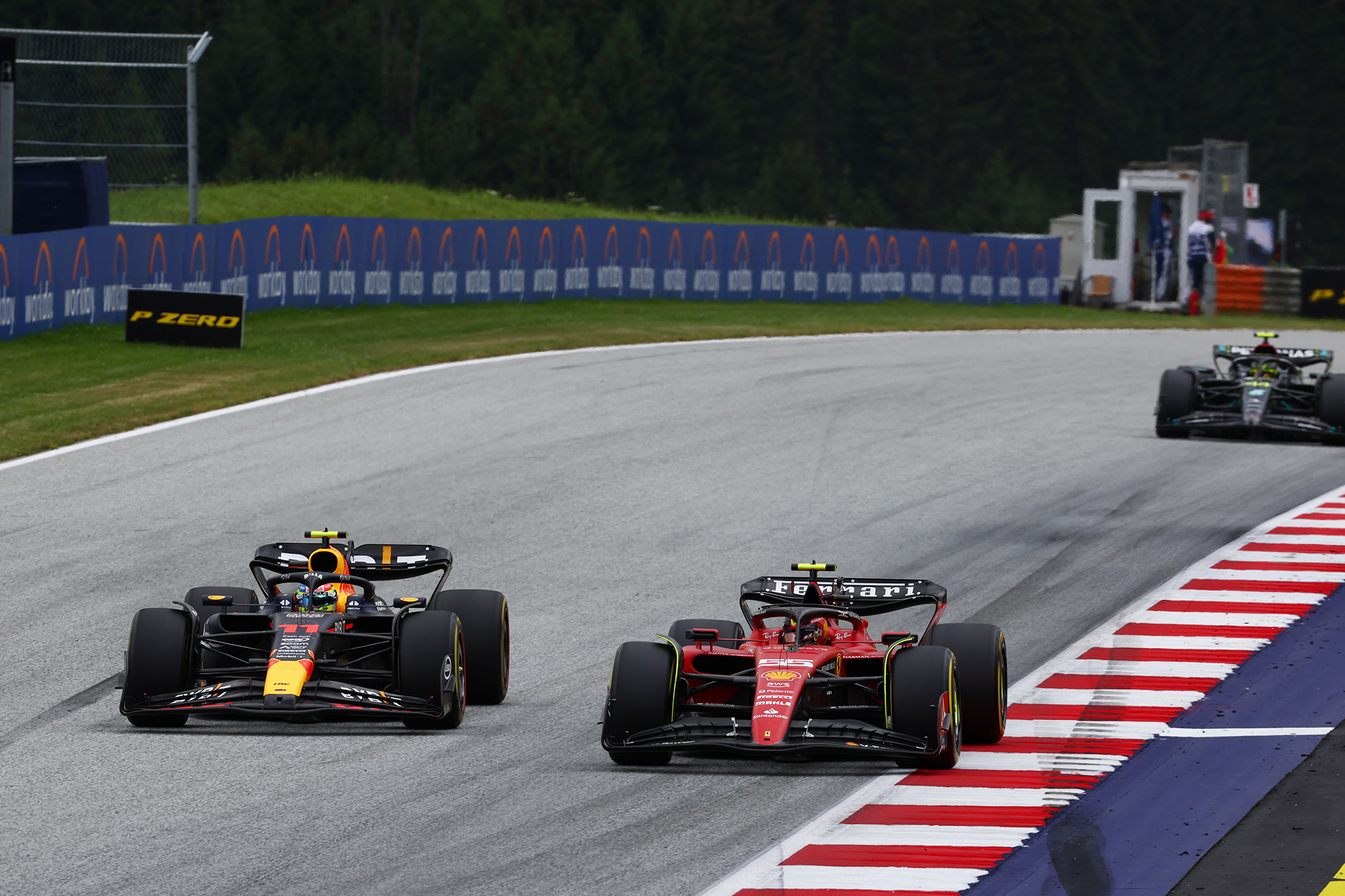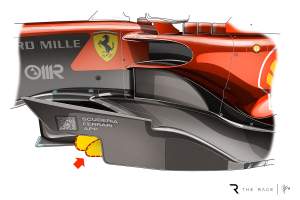Up Next

Let’s forget for a moment who crossed the painted white Turn 10 line how many times and therefore what their penalties should be, how it was so many that not even race control could keep up with it in live time.
For the purposes of this piece, let’s look only at actual performance in Formula 1’s 2023 Austrian Grand Prix and one very obvious question poses itself: how come Max Verstappen’s margin (25 seconds before he stopped near the end for his fastest lap tyres) was much the same as in the early season despite very little development at Red Bull as Ferrari, Mercedes and Aston Martin have piled on the new pieces?
As we suggested two weeks ago, the Canadian result (with Aston Martin and Mercedes just a respective 9s and 12s behind at the end) was not the product of the competition catching up. But merely the particular demands of that day and that track working against Red Bull. Of all the races to date, Montreal is the outlier. The Red Bull Ring simply corrected things back to natural form.
The RB19 was quick enough for Verstappen on an offset strategy to catch and pass Charles Leclerc’s Ferrari and pull out almost half-a-minute on it. Fast enough for Sergio Perez to make his way through to third from 15th on the grid, where his track limits infringements of Friday qualifying had left him.
Some of that advantage was actually a strategic one. Not pitting on the lap 14 VSC – in contrast to most of the field – gave a better spread of tyre usage which more than made up the small saving made on pit stop time. But most of it was pure performance.
“The car is very little different to how it was at the start of the season,” confirmed Christian Horner.
“We’re having to pick our allocation of time between current car and future car and we’re very much down what other teams would have for next year and we don’t want to affect our ’24 performance, which has meant being very light on development in ’23. Thankfully we’ve had a strong car since the start of the year.”
Meantime Ferrari has developed a new sidepod (debuted in Spain) and here a new front wing and floor edge. The Mercedes got its new sidepods and front suspension in Monaco. The Aston Martin its new sidepods in Canada. Plus lots of pieces in between these major upgrades for all of them. They are adamant the changes have put performance on their cars. So logically Red Bull must getting more from essentially the same car than it was?
There is almost certainly an element of that. It’s normal that a team extracts more of a car’s potential when its specification remains static. But conventional development usually overcomes that.

But if that development is correcting a basic imbalance or inconsistency, then perhaps not. Ferrari’s Jock Clear on Sunday morning talked about the development story of the SF23.
“From the set-up point of view, we have gradually improved our understanding of where this car wants to be,” he said.
“So some of those improvements would have come even without the updates, just an underlying better understanding.
“The upgrades are specific to some areas – some ride heights specific to some speed corners. But the whole set-up is front suspension, rear suspension, damping.
“We’ve just now got a better understanding of how this car wants to operated and perhaps we were a bit on the back foot with that simply because the underlying package was so peaky.
“When you have a peaky car aerodynamically the set-up becomes very difficult to home in on. You end up flitting from one direction to the other. As soon as you make that less peaky car you start to create a fuller understanding of where it wants to run. And then you begin to make progress.”
The Ferrari’s difficulty has been high-speed aerodynamic consistency and the resultant lack of driver confidence. The Mercedes’ has been rear end grip and traction and the narrow set-up window that has imposed, the penalty of which varies according to track layout. The Aston Martin has shown a better spread of strengths than either, but tends to suffer if the corner speed spreads – between low speed/high ride height and high-speed/low ride height – are too big.
Their respective developments are addressing these issues as well as just adding more downforce. While those processes have been ongoing, Red Bull has simply been fine-honing its understanding of a great basic car: the very flexible, softly-spring RB19, with its sophisticated underbody and super-tight platform control.
All that said, there is much about the layout of the Red Bull Ring which is very favourable to the RB19’s particular strengths relative to the ‘competition’.
Firstly, there is far less compromise between slow corners and fast with the Red Bull.

“We have seen all season in the GPS traces that their speed is very well balanced between low-speed and high,” observed McLaren’s Andrea Stella. “Much more than the others.”
It’s deriving more of its total downforce from its underfloor than the others, helped by that combination of suspension travel and high-ceilinged venturi tunnels. So any circuit with a big spread of corner speeds will likely amplify the Red Bull’s advantage.
The static ride height can be set low for good slow corner performance without that making the ride height too low in fast corners – because the high tunnels ensure the roof is actually no closer to the ground than those with stiff suspensions but low tunnels. The others are piling developments on, but within the limitations of concepts with harder limits than those of the Red Bull, as defined by bouncing.
Because it’s evidently deriving more of its total downforce from the underbody (which imposes far less drag than wing-derived downforce), so it’s more aerodynamically efficient. A circuit with just seven corners (which the car recognises as corners) is very demanding of aero efficiency.
A clue to just how much less reliant on over-body downforce is the Red Bull came as both Verstappen (in his post-stop chase of the Ferraris) and Perez (in his charge through the field) could run virtually touching the car ahead through the corners.
The Aston Martin was hurt by the slow corners, the Mercedes also. The circuit’s corner speed spread seemed to be responsible for that.
The Mercedes in particular was unbalanced, with understeer and locking fronts. Lewis Hamilton ran an early fourth behind Verstappen and the two Ferraris but was unable to keep Lando Norris in the updated McLaren from passing him on track.

A 5s track limit penalty for Hamilton taken at his first pitstop under the VSC allowed the also-pitting Aston Martin of Alonso to take a further place from him. Perez’s charging recovery from 15th to third knocked him down to seventh, a few seconds ahead of team-mate George Russell. With Pierre Gasly’s Alpine and Lance Stroll’s Aston Martin filling out the points scorers (before the 1200+ track limit infringements were checked post-race).
It was a two-stop race using the medium and hard almost exclusively. The VSC (for a lap 14 Nico Hulkenberg retirement) came after Verstappen and Leclerc had passed the pit entry lane line.
Ferrari brought Leclerc (and Sainz) in on the next lap, but the VSC was rescinded just as it did that. Ferrari’s switch from mediums to mediums confirmed its drivers were two-stopping. But Red Bull wasn’t interested in bringing either of its cars in, even though it could see from the degradation rates that the race was definitely going to be a two-stop.
For Perez the benefit of getting clear air by staying out when much of the midfield in slower cars had pitted was obvious. But even for Verstappen, 5s in the lead as the VSC came out, it made sense to stay out there.
“It was still pretty early, even for a two-stop,” recounted Horner. “Staying out put us on an offset to the others and although it meant we conceded track position [to the Ferraris] when we came in [nine laps later], the tyre advantage it provided meant it was easy to recover that.”

Perez’s chase of the various Mercedes, Aston Martins and Ferraris provided entertainment and he’d set the race’s fastest lap to date on lap 52 on his way to third. But Verstappen wanted that point.
So played out another of those entertaining discussions between Max and his engineer Giampiero Lambiase. The latter feeling it not worth the risk, Max insisting he may as well use his 24s advantage over Leclerc.
Then what about just cooling off the tyres and charging up the batteries? No, the tyres are finished, Max informed him. So they agreed to the stop – Lambiase to Jonathan Wheatley to Horner.
A perfect 2.2s stop and a set of fresh softs allowed him to exit still leading and to knock 1.1s off the previous bar for the maximum 25 points. It was the final lap of the race and in setting that time Verstappen possibly breached track limits at Turn 10, probably for the only time all race…








